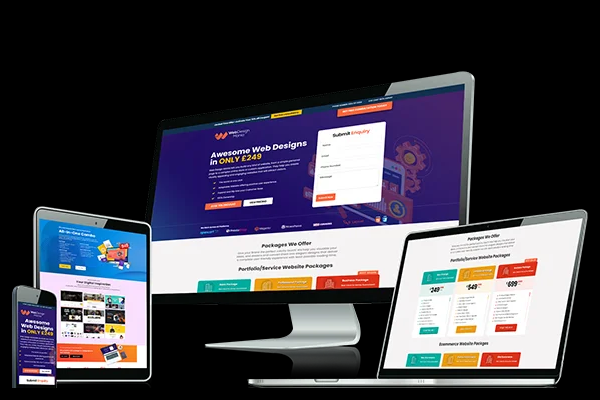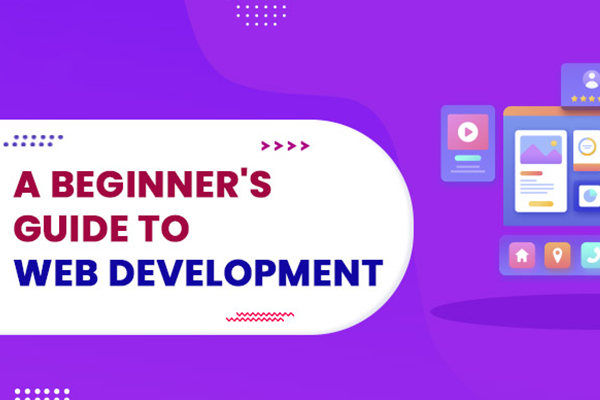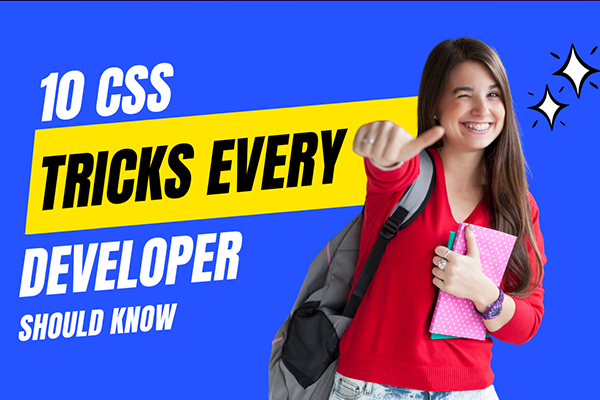Complete Roadmap for Web Development: From Beginner to Advanced
Web development is a dynamic and evolving field, making it one of the most exciting career paths for tech enthusiasts. Whether you want to build personal projects, become a freelancer, or aim for a job as a full-time web developer, having a structured roadmap is key. This comprehensive roadmap will guide you through the steps, tools, and technologies to master web development.
1. Fundamentals of Web Development
A. Understand How the Web Works
Before diving into code, it’s crucial to understand the web’s basic architecture. Learn about:
- How the internet works (client-server model).
- Domains, hosting, and DNS.
- HTTP/HTTPS and how requests/responses are handled.
B. Learn HTML and CSS
HTML (HyperText Markup Language) and CSS (Cascading Style Sheets) are the building blocks of web development.
- HTML: Learn how to structure your webpage. Start by creating elements like headings, paragraphs, images, and forms. Understand semantic HTML.
- CSS: Style your HTML using CSS. Learn how to add colors, fonts, layouts, margins, padding, and more. Flexbox and Grid are essential for responsive layouts.
C. Basic Web Design Principles
Web development is not just about writing code; it’s also about creating visually appealing and user-friendly websites. Learn basic design principles, like:
- Color theory.
- Typography.
- Consistency and alignment.
- Responsive design (mobile-first development).
D. Version Control (Git)
Git is an essential tool for web developers, allowing you to track changes, collaborate with others, and deploy code efficiently.
- Learn Git basics (commits, branches, merges).
- GitHub or GitLab for hosting your repositories.
2. Frontend Development (Client-Side)
A. JavaScript (JS) Basics
JavaScript is the language that adds interactivity to your website. It’s crucial for handling dynamic elements, events, and form validation.
- Variables, data types, operators, functions, loops.
- DOM manipulation: Learn how to interact with the webpage using JS.
- Event handling (clicks, form submissions, etc.).
B. Advanced JavaScript
Once you’re comfortable with JavaScript basics, it’s time to dive deeper.
- ES6+ features (arrow functions, destructuring, template literals).
- Asynchronous JavaScript (callbacks, promises, async/await).
- JavaScript modules (import/export).
C. Frameworks and Libraries
To become an efficient frontend developer, you need to master one or more JavaScript frameworks or libraries. These tools help you build complex, scalable applications quickly.
- React: A library for building user interfaces, developed by Facebook.
- Vue.js: A progressive framework for building user interfaces.
- Angular: A full-fledged framework for building dynamic web apps.
D. Responsive Design & CSS Frameworks
Make sure your websites look good on all devices by mastering responsive design techniques.
- CSS Frameworks: Use frameworks like Bootstrap, Tailwind CSS, or Bulma to speed up your workflow.
- Media queries, Flexbox, and Grid Layout.
3. Backend Development (Server-Side)
A. Learn Backend Languages
Once you have a solid grasp of frontend technologies, it’s time to dive into backend development. The backend is responsible for handling data, managing databases, and responding to client requests.
- Node.js (JavaScript-based, most popular for web developers).
- Python with frameworks like Django or Flask.
- Ruby on Rails for Ruby enthusiasts.
- PHP for older legacy systems.
B. Databases
A key aspect of backend development is managing databases. Learn both SQL and NoSQL databases:
- SQL: MySQL, PostgreSQL.
- NoSQL: MongoDB.
C. Server and Deployment
Learn how to host your web applications on a server.
- Popular Hosting Platforms: Heroku, Netlify, Vercel, AWS.
4. Full-Stack Development
A. APIs and Web Services
As a full-stack developer, you’ll need to integrate APIs and create your own.
- RESTful APIs: Learn how to build REST APIs using Express.js or Flask.
- GraphQL for more efficient querying.
- Authentication: OAuth, JWT, and session-based authentication.
B. DevOps
To take your skills further, gain an understanding of DevOps practices for deployment and scaling.
- Continuous Integration/Continuous Deployment (CI/CD).
- Docker for containerization.
- Cloud services (AWS, Google Cloud, or Azure).
5. Testing and Optimization
A. Testing
Testing is crucial to ensuring the reliability of your web applications.
- Unit Testing (e.g., Jest for JavaScript, PyTest for Python).
- Integration Testing.
- End-to-End Testing (e.g., Cypress or Selenium).
B. Performance Optimization
Optimize the performance of your websites and applications to improve loading speeds and user experience.
- Minimize and optimize CSS/JS files.
- Lazy loading of images.
- Caching strategies (client-side and server-side).
- Using a CDN (Content Delivery Network).
6. Advanced Concepts & Keeping Up-to-Date
A. Progressive Web Apps (PWA)
PWAs are a hybrid between web pages and mobile apps. Learn how to build offline-capable web apps using service workers, manifests, and caching.
B. Web Security
Security is a critical aspect of web development.
- Cross-Site Scripting (XSS).
- SQL Injection.
- Cross-Site Request Forgery (CSRF).
- HTTPS and SSL.
C. Continuous Learning
Web development is a constantly changing field. Stay updated by:
- Following key blogs and websites like CSS-Tricks, Smashing Magazine, and Dev.to.
- Attending webinars and online courses.
- Joining developer communities like Stack Overflow or Reddit.
Conclusion: Becoming a proficient web developer requires dedication and continuous learning. This roadmap serves as a structured guide, but remember that web development is all about experimentation and building real projects. Start with small, achievable goals, and gradually tackle more advanced topics. Happy coding!
my blog
contact me
get in touch
Sector 63A, Noida Uttar Pradesh 201301
Phone:
+917217767892
+918171374921
email:
priyanshukawaii@gmail.com
otakupriyanshu@gmail.com
linkedin:
https://www.linkedin.com/
github:
https://github.com/Priyanshu84iya



